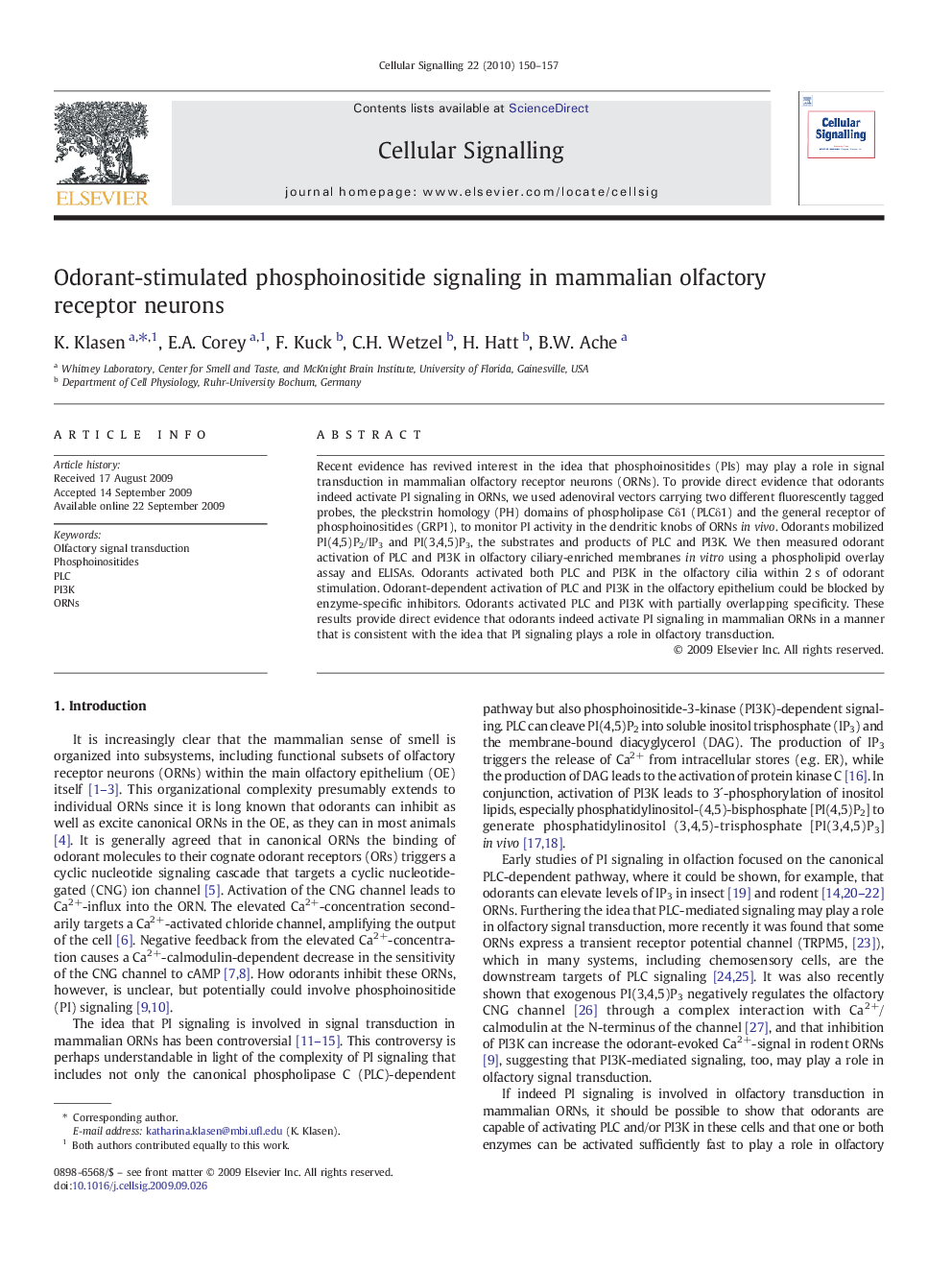| Article ID | Journal | Published Year | Pages | File Type |
|---|---|---|---|---|
| 10815797 | Cellular Signalling | 2010 | 8 Pages |
Abstract
Recent evidence has revived interest in the idea that phosphoinositides (PIs) may play a role in signal transduction in mammalian olfactory receptor neurons (ORNs). To provide direct evidence that odorants indeed activate PI signaling in ORNs, we used adenoviral vectors carrying two different fluorescently tagged probes, the pleckstrin homology (PH) domains of phospholipase Cδ1 (PLCδ1) and the general receptor of phosphoinositides (GRP1), to monitor PI activity in the dendritic knobs of ORNs in vivo. Odorants mobilized PI(4,5)P2/IP3 and PI(3,4,5)P3, the substrates and products of PLC and PI3K. We then measured odorant activation of PLC and PI3K in olfactory ciliary-enriched membranes in vitro using a phospholipid overlay assay and ELISAs. Odorants activated both PLC and PI3K in the olfactory cilia within 2 s of odorant stimulation. Odorant-dependent activation of PLC and PI3K in the olfactory epithelium could be blocked by enzyme-specific inhibitors. Odorants activated PLC and PI3K with partially overlapping specificity. These results provide direct evidence that odorants indeed activate PI signaling in mammalian ORNs in a manner that is consistent with the idea that PI signaling plays a role in olfactory transduction.
Related Topics
Life Sciences
Biochemistry, Genetics and Molecular Biology
Biochemistry
Authors
K. Klasen, E.A. Corey, F. Kuck, C.H. Wetzel, H. Hatt, B.W. Ache,
